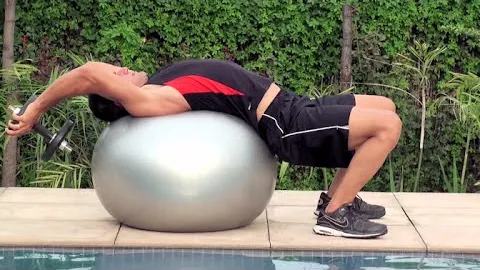
Pull Over on Swiss Ball Exercise
The pull-over on Swiss ball exercise is an effective way to target multiple muscle groups, including the chest, back, and core. This compound movement engages the upper body while also challenging balance and stability. By incorporating this exercise into your workout routine, you can enhance overall strength and muscle coordination. In this article, we will guide you through the steps of performing a pull-over on a Swiss ball and highlight its benefits.
The pull-over on Swiss ball exercise involves lying on a Swiss ball with your upper back and shoulders supported on the ball's surface. With your feet planted firmly on the ground, you will hold a dumbbell or a weight plate with both hands and extend your arms back over your head before pulling the weight up towards your chest. This exercise primarily targets the muscles in your chest and back, but it also engages the shoulders, triceps, and core.
Performing a pull-over on a Swiss ball involves several steps. Follow this guide to ensure you perform the exercise correctly:
Incorporating pull-overs on a Swiss ball into your workout routine can yield various benefits:
In conclusion, the pull-over on Swiss ball exercise is a versatile compound movement that targets multiple muscle groups simultaneously. By incorporating this exercise into your workout routine, you can strengthen your chest, engage your back, improve shoulder stability, enhance core stability, and promote flexibility. Remember to start with an appropriate weight and follow the step-by-step guide to ensure proper form. Challenge yourself and reap the benefits of this effective upper body exercise.
If you're looking for a gym, fitness club or yoga studio, you've come to the right place.
You can find information about gyms in your area. Browse catalog of gyms and find gyms with classes which are you looking for.
On gym page you can find simple information like address, phone or website. You can find list of available classes. You can check availability of personal training or small group classes. On place page you can also see information about open hours.
You can find gyms near you with amenities, courts, studios and equipments.
Use our map to find gym at your city or district.
In Gym Navigator you can find list of exercises with movies for many body parts.
You can browse exercises catalog and find exercises the best of you.
You can also find exercises grouped into workout plans, which you can use to improve you body. Each routine show you exercises one by one and give you possibility to count you progress and count down rest time.